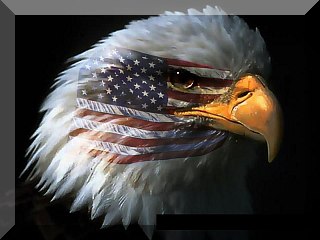










( Literary Digest Cover, Dated 1919. )
YEAR BUILT: 1897
BUILT AT: Bath (ME)
BUILDER: Bath Iron Works
APPROPRIATION: $80,000
(Two approp. of $40,000 Jun 11,1896 & Jun 4 1897 for Fire Island light vessel)
CONTRACT PRICE: $74,750
SISTER VESSELS: LV 69
DESIGN: Steam screw; composite hull (steel frame, wood bottom , steel plated topsides); 2 masts with lantern galleries; stack amidships
LENGTH: 122'10" (loa); BEAM: 28'6"; DRAFT: 12'6" (depth); TONNAGE: 590 displ
PROPULSION: Steam-one single cylinder surface condensing
engine, 22" bore x
20" stroke, 350 IEP; main boiler 11'3" dia x 12'2" long; 4 bladed propeller
8' dia; max speed 8 1/2 knots; also rigged for sail
ILLUMINATING APPARATUS: Cluster of three 100 cp electric lens lanterns permanently mounted in galleries at each masthead
FOG SIGNAL: 12" steam chime whistle; hand operated 1000 lb bell
CONSTRUCTION NOTES - MODIFICATIONS - EQUIPMENT CHANGES & IMPROVEMENTS: LV 68-
Steel frame, keel, arid bilge strake, reinforced with diagonal steel bracing
from keel to sheer; wood planked from keel to main deck level; steel plated
from main deck level to weather deck-
1897: Jun 17, launched-
1906: Equipped with submarine fog signal-
1916: Equipped with radio; call sign NLS-
1920: Original electric illuminating apparatus replaced with single acetylene
lens lantern at each masthead-
1921: Equipped with radio beacon-
1928: Acetylene lights replaced with 375mm electric lens lanterns
STATION ASSIGNMENTS: LV 68
1897-1930: Fire Island (NY)
1930-1932: Relief (3d District)
HISTORICAL NOTES: LV 68-
1897: Sep 20, placed on Fire Island (replacing LV 39) off the coast of Long
Island approx. 40 miles eastward of Sandy Hook; shows 2 fixed white lights; fog
signal 3 sec blast, 4 sec silent; 3 sec blast, 20 sec silent-
1900: Aug 1-21, relieved (by LV 11) for overhaul-
1902: Dec 5, carried off station in squall, losing all chain and mushroom;
steamed to Staten Island for replacement, then towed back to station Dec 6;
original chain and anchor recovered Apr 10 by steamer AMERIA under contract-
1904: Jan 14, parted chain in westerly gale; steamed to Staten Island Jan 15;
assisted back to station by tender LARKSPUR Jan 16-
1906: Jul 30-Aug 26, off station for repairs and installation of submarine bell
signal coded 8-8-
1907: Apr 1-Jul 11, off station for repairs at Brooklyn Navy Yard-
1915: Tests conducted May 1 and Jul 13 to evaluate results of synchronizing
radio fog signal (i.e. radio-beacon) with the steam fog whistle and submarine
bell for distance finding purposes-
1916: Radio equipment installed; call sign NLS
More notes: LV 68-
1916: May 8, rammed by SS PHILADELPHIAN at 0500; side plating cut and stove in
to depth of 2 feet; crew shifted coal and swung out boats filled with water to
heel ship and reduce leakage. Towed by PHILADELPHIAN toward Ambrose lightship,
then picked up by tender PANSY and towed to Depot. Station marked by tender
until relief vessel arrived. Mate, Engineer, 3 firemen, and 2 seamen were
commended by Secretary of Commerce for their prompt and effective action-
1924: Mar 30, rammed by SS CASTILLIAN opening large hole in port quarter,
temporarily patched with tarps and planks and steamed to Depot; new LV 108, then
being readied for Five Fathom, was hurriedly painted and placed on station
temporarily Mar 31 until replaced by a relief vessel-
1930: Assigned Relief duty
RETIRED FROM LIGHTSHIP DUTY: 1932; AGE: 35
SUBSEQUENT DISPOSITION: Sold Jan 1933
COMMANDING OFFICERS: LV 68
1897-1902: David H Caulkins, Master
1902-1903: Henry Harrison, Master
?-1918: Julius Ortman, Mate
1918: Samuel J Mumford, Mate (temp)
1918-1922: Arthur Bruggeman, Mate
1922-?: John Gunderson, Mate
?-?: Frank F Seastedt, Master
 Back to Fire Island
Lightship Station History.
Back to Fire Island
Lightship Station History.
Copyright © 2004 United States Coast Guard Lightship Sailors Association
INC. All rights reserved.
Copyrights also protected by the
Digital Millennium Copyright Act of
1998
Revised: 10/23/06.